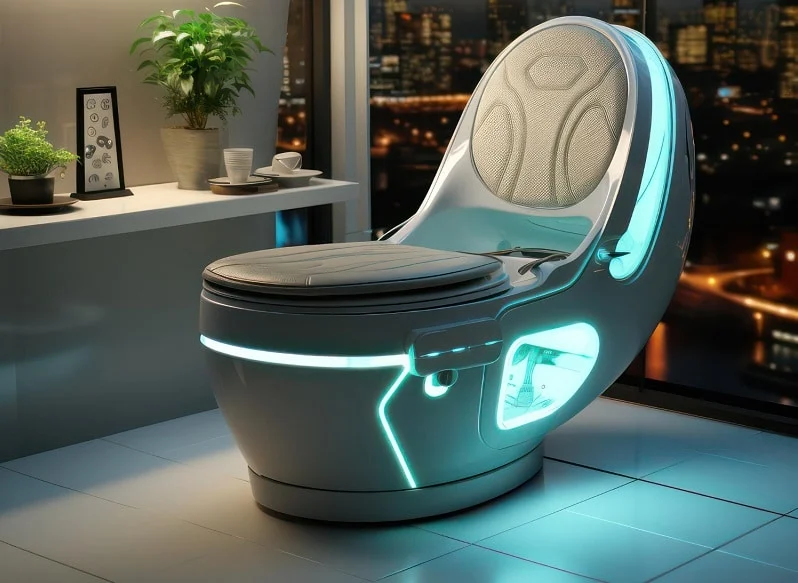The realm of bathroom technology is undergoing a remarkable transformation, with the innovative toilet tankless design leading the charge. As the name suggests, these toilets eliminate the need for a traditional tank, promising numerous benefits such as space-saving, water efficiency, and a sleek modern look. For those in the industry of Quality Assurance (QA), understanding these advancements is crucial as they represent a significant shift in both consumer expectations and manufacturing standards.
The innovative toilet tankless design is not just a trend; it's a response to the growing demand for efficient and eco-friendly solutions. This design integrates directly with the water supply, offering a streamlined profile that fits seamlessly into contemporary bathroom aesthetics. Furthermore, the absence of a tank means fewer components to maintain, reducing the potential for leaks and other common issues associated with traditional toilets.

Understanding the Mechanics of Tankless Toilets
At the core of the tankless toilet design is a direct connection to the building's water line. Unlike traditional toilets that rely on gravity to flush water from the tank into the bowl, tankless toilets use a powerful pump or a high-pressure valve system. This mechanism ensures that each flush is both efficient and effective, using significantly less water per flush compared to conventional toilets.
For instance, the design often incorporates features like dual-flush systems, allowing users to choose between a light or full flush depending on the need. This not only conserves water but also aligns with environmentally friendly practices. For a deeper dive into eco-friendly toilet solutions, explore eco-friendly innovative toilets.
Advantages of Adopting a Tankless Design
One of the most compelling reasons to consider a tankless toilet is its space-saving advantage. In modern urban environments where every square inch counts, the compact nature of these toilets can be a game-changer. By eliminating the bulky tank, bathrooms can appear more spacious and less cluttered.
Additionally, the water efficiency of tankless designs cannot be overstated. With increasing concerns over water conservation and sustainability, these toilets offer a practical solution. They are designed to use as little as 0.8 to 1.6 gallons per flush, significantly less than the 3.5 gallons used by older models.
Moreover, the streamlined design makes them easier to clean and maintain. The absence of a tank means fewer nooks and crannies for dirt and bacteria to accumulate, enhancing overall hygiene. For more insights into the hygiene benefits of modern toilet designs, visit Duravit's HygieneFlush.
Challenges in Implementing Tankless Toilets
While the benefits are clear, there are challenges associated with the innovative toilet tankless design. One primary concern is the initial installation cost. The technology and components required for tankless systems are generally more expensive than traditional setups. However, this cost can often be offset by the long-term savings on water bills and reduced maintenance expenses.
Another consideration is the need for proper plumbing infrastructure. Not all buildings, especially older ones, have the necessary water pressure or plumbing configurations to support a tankless toilet. This may require additional modifications during installation.
For an understanding of how modern toilet designs are revolutionizing the industry, read more here.
The Future of Toilet Design
The rise of the tankless toilet is part of a broader trend towards smart and sustainable bathroom solutions. As technology continues to evolve, we can expect even more innovations that focus on user comfort, efficiency, and environmental responsibility.
Smart features such as automatic flushing, self-cleaning functions, and integrated bidets are becoming more common. These advancements not only enhance the user experience but also contribute to water conservation efforts. For a glimpse into the future of toilet technology, check out Squatty Potty's insights.

FAQ
Are tankless toilets suitable for all bathrooms?
Tankless toilets are ideal for most modern bathrooms, especially where space and aesthetics are priorities. However, they require specific plumbing configurations that might not be present in older buildings.
Do tankless toilets use more water than traditional toilets?
No, tankless toilets are designed to be more water-efficient. They use advanced mechanisms to ensure effective flushing with minimal water usage.
What maintenance is required for a tankless toilet?
Tankless toilets generally require less maintenance than traditional models since they have fewer parts. Regular cleaning and occasional checks of the flush mechanism are recommended.
This article contains affiliate links. We may earn a commission at no extra cost to you.






